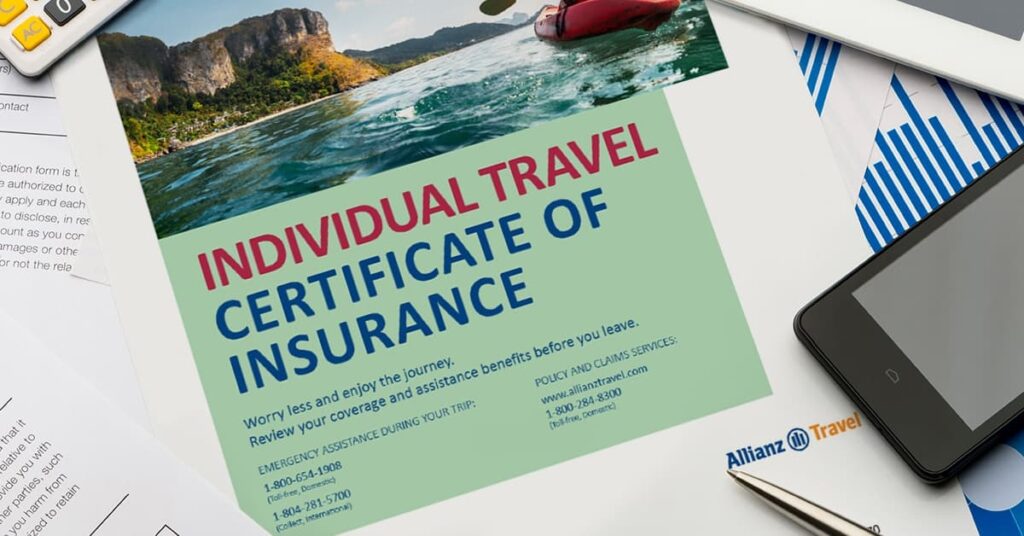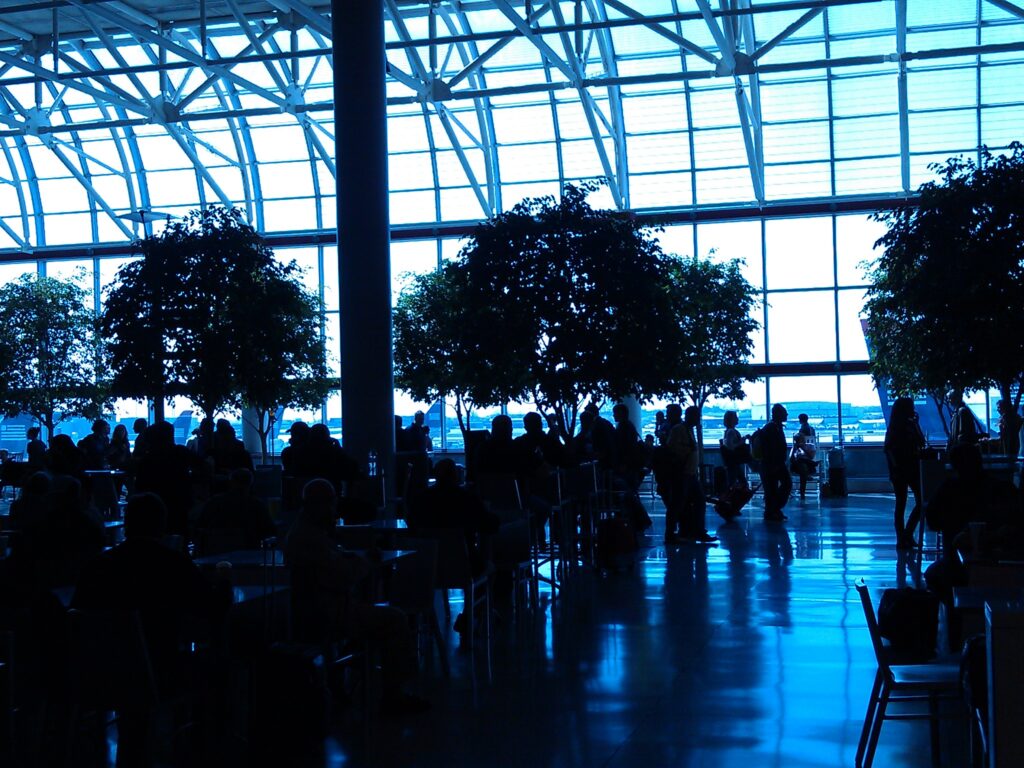The Dept. of Homeland Security just announced the end of their shoes-off mandate, proclaiming the new policy will increase hospitality for travelers. Really? Given the harsh reception many travelers now meet at U.S. airports, and the confusing do’s and don’ts of airport security, that’s an unlikely outcome.

The DHS credits the change — a welcome one — to “cutting-edge technological advancements and a multi-layered security approach.” To provide travelers the latest air travel tips, we asked an expert about this new security approach.
Will shoe-wearing fellow passengers put us at greater risk?
“The new policy just gives a wider footprint of people the privilege to not remove their shoes,” Sheldon H. Jacobson PhD, Professor in Computer Science, University of Illinois, Urbana said in our interview. “The Real ID requirement is what appears to have reduced the risk calculus to make this possible.”
Shoes On Policy May Reduce Long Waits and Security Delays

We understand long waits and travel hassles; we’ve been there. Road rage has taken to the skies. Couple that with sky-high prices, confusion about carry-ons and traveler mistrust. Expect misinformation on service animals, exorbitant fees for seat reservations, glitches in airport software and less than stellar customer service at most airlines. Plan for under-staffing and over-waiting at every part of your journey.
With expectations like that, you won’t be disappointed!
Flyer Rights Now Protected In U.S…. Sort of!
In good news? Several consumer groups pushed the Biden-Harris Administration to improve the airfare refund process and make airlines responsible to consumers. Now, both the U.S. and E.U. provide some compensation for extreme flight delays and flight cancellations if something goes wrong. (Note that weather delays, out of the airlines’ control, are often exempt from these rules.)
The U.S. Department of Transportation offers information on what’s available if domestic air travel schedules are not met. They’ve also made progress in guaranteeing that families sit together on flights. (Check out their chart on which airlines comply with Family Seating regulations.) The European Union compensation may cover customer care, rebooking of flights and even full reimbursement of flights gone wrong.
It’s all pretty confusing! We’ve found the free app AirHelp, which tracks flights, delays and alerts you to possible compensation, really helpful. They also have a subscription product ideal for frequent travelers. And for all the other grief? Take to social media, as those customer service reps are in a hurry to make you happy.
Air Travel Tips + Preparing for International Travel

Preparation is the best antidote to dreading travel. Before you go, evaluate the current safety situation at your destination. The State Department alerts U.S. citizens to possible risks of travel on their website, and it’s worth a look.
Do due diligence about who you’ve booked that wonderful bargain trip with. Make sure you book with a professional, whether online or in person. Ask if they have an emergency contact to call 24/7 should you need assistance rebooking flights, finding host keys or changing hotel or condo units.
When You Understand Travel Risks, Insure Your Vacation Plans
Make sure your paperwork is in order and, if you’ve paid a deposit or non-refundable fee, that you understand the terms. Travel insurance is essential in our book; every family should look into purchasing a policy. Safeguarding your home is another essential; there are many security systems that you can monitor from a distance with a cellphone. Ask neighbors to keep their eyes open in your absence.
The official site, Travel.State.Gov, is a great clearing house for resources at your new destination. The British agency U.K. Government Travel Abroad Tips is another helpful resource packed with common sense safety tips.
Customs And Border Crossing Air & Land Travel Tips
Additionally, here’s expertise shared by the US Dept. of Homeland Security, TSA, U.S. Customs and Border Protection and a lot of experienced travelers to make your next vacation smooth, safe and as free of hassles as possible.
1. Avoid Fines Caused by Ignorance
Avoid fines and penalties associated with coming back to the U.S. with prohibited items. Familiarize yourself with the “Know Before You Visit” section of the CBP website.
2. Use Border Wait Times Productively if You Can
Monitor border wait times through the CPB app for various ports of entry. Be prepared to declare all items acquired abroad and have your approved travel documents available for inspection.
3. Be Ready for your Customs Inspection
International border crossers should expect a thorough inspection when entering the U.S. from Canada or Mexico. As we read daily, CBP officers (including ICE) have the authority to conduct enforcement examinations without a warrant.
4. Make Sure Your Papers and the Kids’ Papers Are In Order
Adults traveling with minors under age 18 who are not in their sole legal custody (such as children of divorced parents, grandkids, friends of your kids, sports team, etc.) must have a written, notarized Permission to Travel Letter signed by each minor’s legal guardians to cross borders.

5. Get to the Airport Early So You’re Not So Frazzled
Arrive early to cope with lengthier security checkpoints and possible holiday crowds. It’s true whether you’re flying domestically or internationally. You may get through Security too quickly, but hey — airport cuisine has improved dramatically!
6. What’s Up with the Confusing Rules about Liquids, Gels Etc in Carry-Ons?
The carry-on luggage inspection process is frustrating. Existing procedures like storing liquids and gels in 3-ounce bottles in a zip-loc bag, and removing jackets and laptops for screening remain in place at some airports. We had a 6 oz. container of cream cheese confiscated because “spreadables” are no longer allowed. (Although cream cheese on your bagel is no problem.) Is airport security so random?
According to Professor Jacobson, “The basic policies and strategies in place are uniform across all airports. What differs are the airport security footprints and if there are particular elevated risks specific to an area or airport.”
That 3-ounce rule is a hassle for many families, so we asked Professor Jacobson if it might go away like the no-shoes policy. His reply: “As per the TSA’s policy prior to 1/20/2025, this will stay in place until 2040. However, given that the TSA has no admistrator in place, and the Sectretary of DHS appears to be making the calls, anything is possible. The risk calculus on this one is not in favor of ending the current liquid policy.”
7. Get Precheck But Be Smart About Using It. Choose Your Security Line Carefully!
TSA Precheck may not save you any time. At security-savvy airports like LGA and SFO, many more people are in the Precheck Line than in the general security line.
Take advantage of that irony to speed through the General Security Line. You must pull out electronics, but your Precheck Status has always meant you can keep shoes and jackets on.
8. Don’t Be Shy About Using Family Lanes at Airport Security
TSA has Family Lanes at every security checkpoint which are designed for passengers who need more time. That means anyone with young children, those with special needs, or those who may process through the security checkpoints very slowly. Take advantage of them.
9. Prepare Your Unaccompanied Minors for Travel
For boarding documents, only children over age 18 need to have a government-issued Photo ID. Use our air travel tips page about kids traveling alone as Unaccompanied Minors and make sure they have some ID that matches the name on their boarding pass.
10. Check Baggage. If You Hate The Fees, Get An Airline’s Credit Card
Check as much baggage as you can. Checked baggage is screened separately. Avoid the hassle of screening small containers of baby lotion and infant formula. E-scooters and other products with Lithium-Ion batteries are still a no-no.
Remember, other items your kids might carry — and children themselves – may be subject to further screening.
Best Air Travel Tip: Don’t Rush. Be Calm About The Wait. A Better Future is Coming!
Air travelers have to arrive earlier than in the past for their flight. Two hours for domestic flights and three hours before international flights are the latest standards. (Our kids never do this, they breeze in 30 minutes before the ‘Gate Closes’ time and have never missed a flight. Go figure.)
The inevitable longer waits makes an airport lounge irresistable. Buy passes through credit card companies or sites such as LoungePass. Free snacks, WiFi and maybe a Chardonnay definitely make the wait more pleasant.
Professor Sheldon H. Jacobson sees good news on the travel horizon. “Facial recognition is what will change airport security as we know it from a detect threat item system to a deterring and stopping bad actors system.” That should make some of these air travel tips obsolete and, hopefully, smooth an otherwise challenging journey.
After all, getting there should be as much fun as being there.
Dear Reader: This page may contain affiliate links which may earn a commission if you click through and make a purchase. Our independent journalism is not influenced by any advertiser or commercial initiative unless it is clearly marked as sponsored content. As travel products change, please be sure to reconfirm all details and stay up to date with current events to ensure a safe and successful trip.
Its like you read my mind You appear to know a lot about this like you wrote the book in it or something I think that you could do with some pics to drive the message home a little bit but instead of that this is fantastic blog An excellent read I will certainly be back
Your blog has quickly become one of my favorites. Your writing is both insightful and thought-provoking, and I always come away from your posts feeling inspired. Keep up the phenomenal work!
Your blog has become an indispensable resource for me. I’m always excited to see what new insights you have to offer. Thank you for consistently delivering top-notch content!
thank you for sharing with us
Before my trip, I required all of these specifics, so I randomly looked for information about airline policies. Then I came across this helpful article containing all the necessary travel-related information. I appreciate you providing this insightful advice.
Thank you for writing this useful tips. it might be help me in future